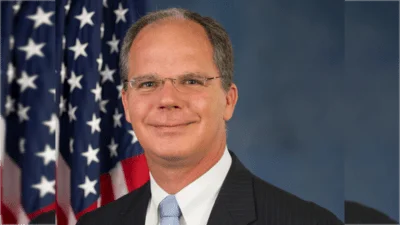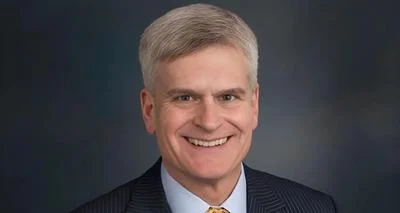American workers pay for Social Security, contributing money with every paycheck. Over Social Security’s lifetime, American workers have contributed 14.6 trillion dollars to Social Security. The Social Security Trust Fund currently has a 2.7 trillion dollar surplus.
Social Security Administration (SSA) employees work diligently, day in and day out, to protect Americans’ Social Security, as evidenced by the successful fraud investigation that is the subject of our hearing.
Social Security provides a lifeline to 58 million Americans each month, yet it has an overpayment rate of less than half a percent. Mind you - these are ANY type of overpayment. The vast majority of overpayments are caused by error, not fraud.
SSA’s error rate is quite low in comparison to other financial actors. Private sector payroll offices - which calculate workers’ paychecks and withholding - report that they have an error rate four times higher than SSA’s -- an average of 2 percent.
The Federal Trade Commission reports that one out of every five consumers has an error in their credit report that could keep them from getting a loan or force them to pay a higher rate than they should.
Every year, SSA re-reviews nearly 500,000 current disability beneficiaries to ensure that the recipients are still legally eligible for benefits. Those case reviews save the Trust Fund $9 for every dollar we invest in them. In addition, SSA also conducts what are called “pre-effectuation reviews," in which SSA also re-reviews half of disability benefit award decisions after eligibility is determined and before any payment is reviewed, just to make sure that the evidence is solid and the decision was correct.
One of SSA’s most powerful fraud-busting teams - the Cooperative Disability Investigations (CDI) units - links the Inspector General with local law enforcement and front-line SSA staff. They are highly effective. In 2012 alone, these fraud-busters prevented $340 million in fraudulent Social Security payments and saved $235 million for Medicare and Medicaid, while working with state, local, and federal prosecutors to impose criminal penalties on those who broke the law.
Most importantly, fraud prevention is built in to Social Security’s day to day operations.
Who was it that uncovered the fraud conspiracy in New York? SSA’s front-line staff.
Who was it that uncovered the conspiracy in Puerto Rico? SSA’s front-line staff.
Day in and day out, Social Security workers are standing guard, on the lookout for suspicious claims and reporting them to investigators.
The recent fraud cases were sophisticated conspiracies, involving recruiters who sought out individuals willing to falsify their applications and colluding doctors willing to provide fraudulent medical evidence. It’s not easy to qualify for disability benefits - applicants must submit evidence from doctors showing that their medical condition prevents them from doing any job in America.
Even after all appeals are exhausted, the majority of applicants for DI do not qualify for benefits.
Defrauding DI, as in these conspiracies, requires criminal collusion from doctors and other persons in a position of trust.
The New York conspiracy required former police officers who recruited others to lie, an attorney willing to submit falsified claims, doctors willing to provide fake evidence, and applicants willing to undergo fake treatment for a year to make it look like they were genuinely disabled.
Social Security’s front-line employees are trained to spot and prevent fraud. Every employee - from the newest hire to the long-time veterans - attends fraud referral training every year and is alerted to potential fraud tipoff’s via a monthly bulletin.
In 2012, reports from Social Security employees were responsible for nearly two-thirds of the fraud investigations opened by the Inspector General.
The vast majority of DI recipients are honest, hard-working Americans who earned their benefits through hard work and need them to live on.
To put this in perspective, in 2013, about 11 million people received Social Security disability and 1.8 million applied for disability benefits. That same year, SSA front-line staff made over 22,500 referrals for suspected disability fraud. The IG opened formal investigations on 5,300 cases, and referred 100 to the US Attorney’s office for prosecution.
As you can see from these statistics, the vast majority - over 99.9 percent of disability beneficiaries -- are hardworking Americans who earned their benefits. They paid in when they were working, and now that they can no longer work, they receive their earned benefits.
Yes, the number of people receiving DI has grown in recent years. But do you know what the guy who crunches the numbers says, the guy who knows this population inside and out? That’s SSA’s Chief Actuary, and he’s told us that DI has grown in recent years mostly because of the baby boomers - there are a lot more people working and paying in, more women are working and paying in, and the baby boomers - a big group - are in their most disability-prone years.
And what role does fraud play in the growth of DI? It’s not even a blip. Fraud doesn’t even register as a factor in the actuaries’ projections on DI - or that of other reputable analysts. Demographics drive the growth, not fraud.
The truth is, there are always going to be dishonest people who cheat. Just like thieves rob banks because that’s where the money is, some people will try to rob Social Security to get monthly benefits they don’t deserve.
SSA can stop them, but they need support from Congress.
In recent years Congress has made SSA’s job -- protecting Social Security on behalf of the workers who pay for it -- harder. Social Security’s budget has been cut by about of a billion dollars a year since 2011. Although I am pleased to see that the proposed Omnibus bill restores funding to the level in the Budget Control Act, Republicans in Congress over the past two years have blocked $421 billion that SSA was supposed to receive to fight waste, fraud, and abuse, costing taxpayers billions of dollars.
SSA has lost nearly 11,000 of its highly-trained employees to budget cuts over the past three years, most of them front-line workers that we rely on catch fraudsters.
The New York region has lost nearly 13 percent of its front-line staff. Almost a fourth of disability examiners - the front line staff who review disability applications and first detected suspected fraud in New York and Puerto Rico - have left and not been replaced. During the recent government shutdown, SSA and other agencies had to shut down case reviews and other fraud-busting activities for several weeks. The bottom line is that when SSA’s front-line workers noticed this problem and reported it to the Inspector General in 2008, SSA had far more staff reviewing disability applications than they have now.
As disturbing as it is to hear about these fraud conspiracies, we should remember why we’re hearing about them - it’s because the perpetrators are being brought to justice because of the efforts of law enforcement and SSA’s skilled, vigilant workers.
The reason these arrests were made in New York, and the fraud ring was shut down in Puerto Rico, was not because of outside scrutiny. It was because SSA front-line workers reported them to SSA investigators and worked with law enforcement to ferret out the conspiracy.
At the same time, we must keep in mind that for the overwhelming majority of beneficiaries, there is no fraud involved - just Americans who worked hard all their lives, became disabled, and rely on the benefits they earned to support themselves and their families.
Let’s be sure not to paint with an overly broad brush when the reality is that fraudsters are a grain of sand compared to the sea of Americans have worked hard and earned their benefits.
It is very timely that we’re having this hearing at the same time as we debate legislation to fund the federal government for the rest of 2014. The only way to make sure SSA can adequately police fraud while ensuring that individuals who have earned their benefits get paid on time and in the right amount is to provide them with sufficient resources.
SSA has a proven track record: if we give them the right funding, so they can hire and train the right staff, SSA will make sure the right people get the right benefits in the right amount.
I hope we can begin to work in a bipartisan way to make that happen.








